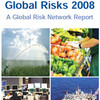 Today we continue my exploration of the Harvard Business Review Paperback Series
Today we continue my exploration of the Harvard Business Review Paperback Series that I started yesterday when I reviewed Managing External Risk, an enterprise-wide approach towards risk management. Today it’s back to basics: Harvard Business Review on Supply Chain Management. It was published in 2006, so it has been out there for a while, but I have been blissfully oblivious to it, preoccupied as I have been with other literature. Besides, the Harvard Business Review Paperback Series, as the “Paperback” in the name implies, are not written for us academics and researchers, but for the professional manager seeking executive perspectives and solutions.
Thought leaders and rising stars
As with yesterday’s book on Managing External Risk, this one too is written by the preeminent thinkers and the emerging experts of the field. And again, there are eight separate chapters, each devoted to a certain aspect of supply chain management. Again, I did my best in trying to find a personal or company website belonging to each of the authors (I didn’t find all, so if any of my readers want to help locate the rest, or if my links are wrong, particularly if you are the author who is mentioned, please contact me).
What happened to supply chain risk?
Admittedly, this review is perhaps a small step aside from supply chain risk as the focal point of this blog, but I cannot not recommend a good book when I find it, can I? The overarching theme of this book is the development of supply chain relationships for better supply chain performance, and one of the best insurances against supply chain risk is developing relationships that perform well, in good times, and in bad times. Nokia and Ericsson know all about that.
One by one
First out is We’re in This Together by Douglas M Lambert and A Michael Knemeyer, who describe a model that offers a quick process for aligning expectations and determining the most productive level of partnering. No partnership should exist for its own sake alone and the reason why so many partnerships fail is that should never have existed in the first place. This here will tell you how to avoid the worst pitfalls.
In Building Deep Supplier Relationships by Jeffrey K Liker and Thomas Y Choi the focus is on the Japanese model of supplier partnering and the six steps that Toyota and Honda have employed to successfully gain the upper hand on their American counterparts, the Big Three.
Rapid-Fire Fulfillment by Kasra Ferdows, Michael A Lewis and Jose A D Machuca is centered around the story of the Spanish high-end fashion clothier Zara, and how they manage to a supply chain with maximum agility, a “superresponsive” supply chain that defies most of the traditional wisdom on how supply chains work best.
Supply Chain Challenges: Building Relationships takes the form of a conversation among some of the leading thinkers and doers in the field of supply chain management, a mix of practitioners, scholars and consultants: Scott Beth, David N Burt, William Copacino, Chris Gopal, Hau Lee, Robert Porter Lynch, and Sandra Morris.
Unsurprisingly, The Triple-A Supply Chain by Hau Lee has found its way into a book like this. Orginally published in 2004, in – where else – the Harvard Business Review. That said, The Triple-A Supply Chain is perhaps the seminal work on agile supply chains? It is certainly one of the most cited works on agility that I can think of.
Steven J Spear and H Kent Bowen make an attempt at Decoding the DNA of the Toyota Productions System, based on a four-year study of 40 plants, showing that the extreme flexibility of the system stems – paradoxically enough – from its seemingly extreme rigidity, a system that is governed by four rules: the way workers do their work, the way they interact with each other, how production lines are constructed and how people learn to improve.
Steven J Spear makes another appearance with Learning to Lead at Toyota, where he builds on the previous article and tells the story of how Toyota inculcates its managers: There’s no substitute for direct observation. Proposed changes should always be structured as experiments. Workers and managers should experiment as frequently as possible. Managers should coach, not fix. Becoming a manager at Toyota is apparently a long hard way without any shortcuts.
Finally, V G Narayanan and Ananth Raman finish off with Aligning Incentives in Supply Chains. Here, the authors make a case in point that companies are often so concerned with their immediate supply chain that they neglect that their partners need to pull in same direction and must be aligned properly for the full supply chain to function properly. If the firms all work together, and collectively share risks and rewards, they all win – if, and only if incentives are aligned.
Conclusion
To me, the first article and the Zara article, along with the final chapter are the best parts of this book. And a whole three articles on Toyota (and Honda)? I think that’s pushing the envelope a bit. While those are good and valid examples of excellent supply chain management, for a paperback handbook like this, more variety should have been sought. Just my two cents. But perhaps, there are no better examples? That may very well be…
Reference
Harvard Business Review (2006). Supply Chain Management. Boston: Harvard Business Press.
amazon.com
- Buy this book: Supply Chain Management
Related
- husdal.com: Book Review: Logistics and Supply Chain Management
- husdal.com: Book Review: Logistics Management and Strategy












